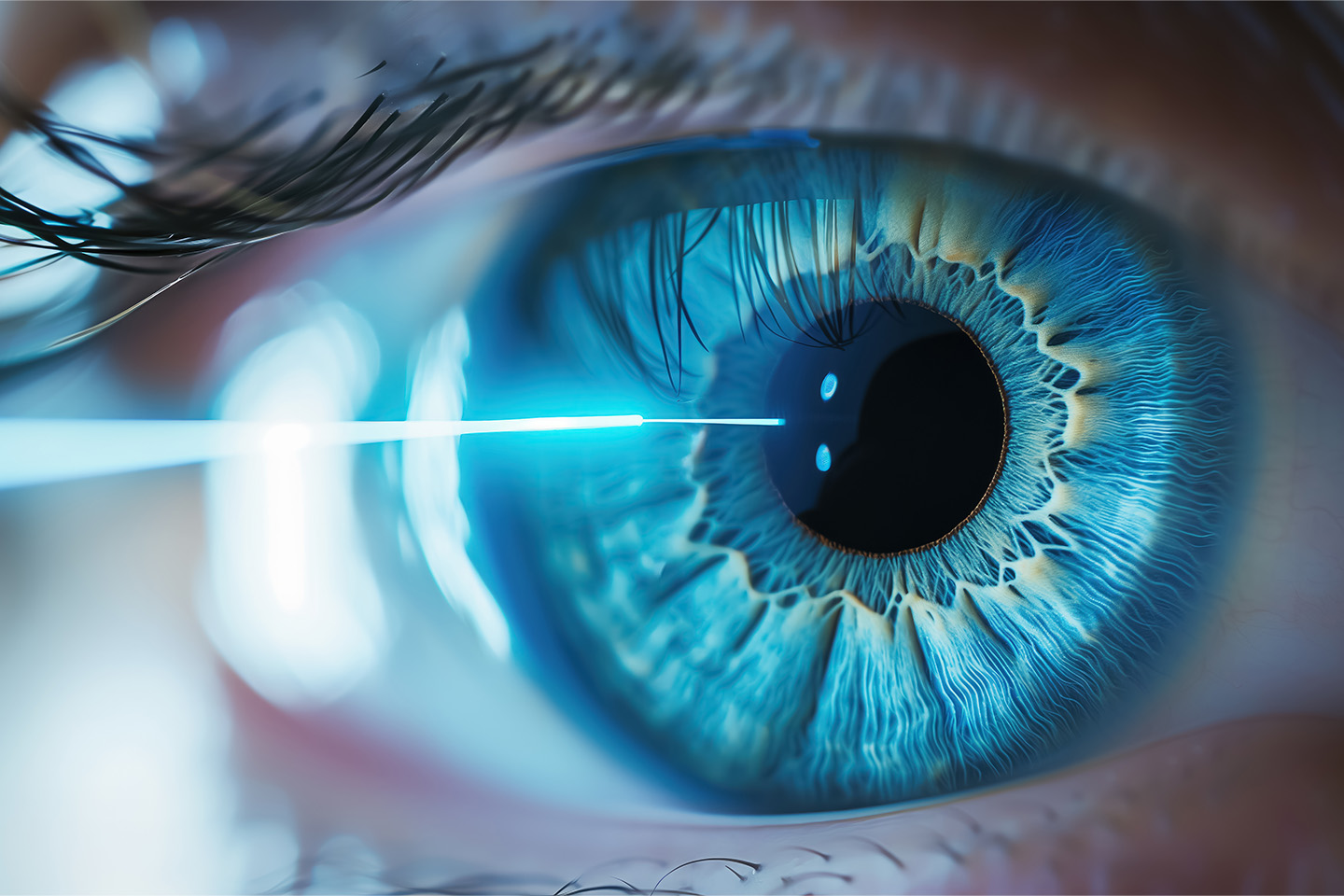5 Tips To Reduce Eye Strain

With various restrictions related to the global pandemic, people are spending more time online than ever. Whether you work from home, have children in remote learning or spend more time enjoying digital entertainment, it can take a toll on your eyes.
Symptoms of Eye Strain
Eye strain symptoms can include:
- Watery, dry eyes
- Headache
- Sore, tired eyes
- Blurred or double vision
- Difficulty concentrating
- Sensitivity to light
- Sore neck and shoulders
Overuse of Computers and Digital Devices
Extensive use of computers, tablets and smartphones can create eyestrain.
When you use the computer, you probably strain your eyes more than consuming printed media. Reasons for this include:
- People tend to blink less when they used computers. Blinking moistens the eyes.
- You may also use digital screens at odd distances and angles.
- Unless you use an anti-glare screen or glasses, you may experience more glare on digital devices.
- Some platforms and websites have poor contrast between the background and the text.
For some people, underlying eye problems such as uncorrected vision can worsen the discomfort of computer eyestrain.
Poor posture and a computer workstation that isn’t set up properly can also increase eye strain. If you sit in an area with air conditioning or a fan nearby, this tends to dry your eyes and can increase eye strain.
Prevention Tips
1. 20-20-20 Rule
Eye strain often occurs when you continue a single activity without a break. As a rule of thumb, look away from the computer screen every 20 minutes. You should focus on a point at least 20 feet away for 20 seconds.
It’s also important to give your eyes and mind a break by avoiding intense activity for at least several hours during the day. This is especially true if you have a long commute to work which can also strain your eyes. If you work from home, the lines between work and home life blur. You may find yourself spending more time on digital media for entertainment purposes. Ensuring that your eyes get enough rest might mean decreasing your screen time significantly.
2. Screen Position
When you look at a digital device, it’s important to make sure that it’s at the proper angle. Most people prefer the screen a few feet away. Viewing your screen at eye level or slightly below eye level can also reduce eye fatigue.
3. Find the Right Lighting
Using the wrong lighting can increase eye strain. If the light is too dim or too bright, it can hurt your eyes. For best results the light should come in from behind you. However, it may reduce eye strain to dim the lights when you’re watching television.
4. Use Eye Drops
Intensely focusing on a screen reduces your blink rate. The less you blink, the more irritated your eyes become. By using artificial tears, you can keep your eyes moist, which can prevent eye strain.
5. Check Air Quality
Poor air quality does not just include pollution. Although working in an environment with a lot of dust can increase eye strain, blowing air from fans and heating and cooling systems can also dry out your eyes. This leads to eye irritation. Improving the air with a humidifier can help with eye strain.
When to See the Best Eye Doctors in Phoenix
If your eye strain continues and the symptoms don’t go away on their own, it may be time for an eye exam. Make an appointment at our Mesa and Chandler locations today. Swagel Wootton has been taking care of patients in the East Valley of Arizona for over 50 years.
[DISPLAY_ULTIMATE_SOCIAL_ICONS]









